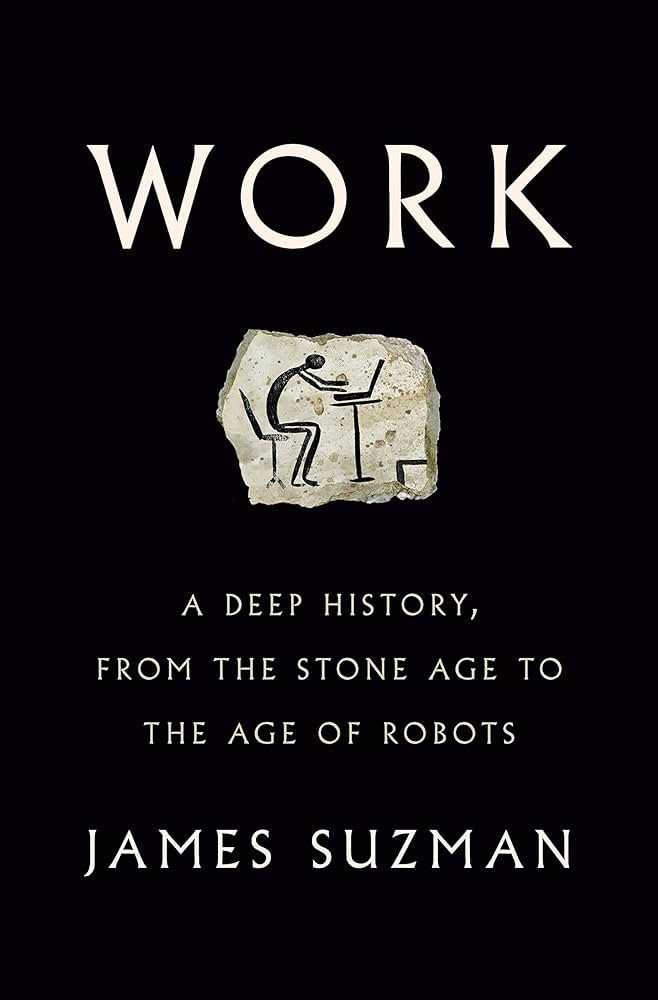The Evolution of Artificial Intelligence: Explained, Mechanisms, and Origins
Before delving into the evolution of AI, it is important to understand what AI actually is. AI refers to the development of computer systems that can perform tasks that would typically require human intelligence. These tasks include speech recognition, decision-making, problem-solving, and learning.
The Development of AI Mechanisms
The development of AI mechanisms has been a result of advancements in various fields, including computer science, mathematics, and cognitive science. AI systems rely on algorithms and models that enable them to process and analyze large amounts of data, recognize patterns, and make decisions based on the information available.
Machine learning is a key mechanism in AI development. It involves training AI systems on large datasets to learn and improve their performance over time. Deep learning, a subset of machine learning, uses artificial neural networks to simulate the human brain’s structure and function, allowing AI systems to learn and make decisions in a more complex manner.
The Origins of Artificial Intelligence
The origins of AI can be traced back to the 1950s when the field of AI was officially established. The term “artificial intelligence” was coined by John McCarthy, who is considered one of the founding fathers of AI. Since then, AI has seen significant advancements and has become an integral part of our lives.
Early AI systems focused on rule-based reasoning, where explicit rules were programmed to guide the system’s behavior. However, as technology advanced, AI systems started incorporating machine learning techniques, allowing them to learn and adapt without explicit programming.
AI in Practice: Real-World Applications
AI has found applications in various industries, including healthcare, finance, transportation, and entertainment. In healthcare, AI is used for medical diagnosis, drug discovery, and personalized treatment plans. In finance, AI is used for fraud detection, algorithmic trading, and risk assessment.
AI is also transforming the transportation industry with the development of self-driving cars and intelligent traffic management systems. In the entertainment industry, AI is used for content recommendation, virtual reality, and video game development.
The Future of Artificial Intelligence
The future of AI holds immense potential. As technology continues to advance, AI is expected to become more sophisticated and capable of performing complex tasks. However, there are also concerns about the ethical implications of AI, such as job displacement and privacy issues.
Artificial Intelligence (AI) is a branch of computer science that focuses on creating intelligent machines capable of performing tasks that would typically require human intelligence. It involves the development of algorithms and models that enable machines to learn from data, make decisions, and solve problems.
There are several key components that make up AI systems. These include machine learning, natural language processing, computer vision, and robotics. Machine learning is a subset of AI that focuses on enabling machines to learn from data and improve their performance over time. Natural language processing allows machines to understand and interpret human language, while computer vision enables machines to perceive and understand visual information. Robotics combines AI with physical systems to create intelligent machines that can interact with the physical world.
The development of AI has been driven by advancements in computing power, data availability, and algorithmic improvements. With the increasing amount of data being generated and the ability to process it at high speeds, AI systems have become more capable and efficient. Additionally, breakthroughs in algorithms, such as deep learning, have significantly improved the performance of AI models in tasks such as image recognition and natural language processing.
AI has numerous applications across various industries. In healthcare, AI is being used to develop diagnostic tools and personalized treatment plans. In finance, AI is used for fraud detection and algorithmic trading. AI is also being utilized in transportation for autonomous vehicles and in customer service for chatbots and virtual assistants.
Looking to the future, the field of AI continues to evolve rapidly. Researchers are exploring new techniques and models to enhance the capabilities of AI systems. Ethical considerations and the impact of AI on society are also becoming increasingly important topics of discussion. As AI becomes more integrated into our daily lives, it is essential to ensure that it is developed and deployed responsibly.
The Development of AI Mechanisms
1. Machine Learning
One of the key mechanisms in AI development is machine learning. Machine learning algorithms enable computers to learn from data and improve their performance over time without being explicitly programmed. This mechanism allows AI systems to analyze large amounts of data, identify patterns, and make predictions or decisions based on the learned information.
2. Neural Networks
Neural networks are another important mechanism in AI development. Inspired by the structure of the human brain, neural networks consist of interconnected nodes or “neurons” that process and transmit information. These networks are capable of learning and adapting, making them suitable for tasks such as image and speech recognition.
3. Natural Language Processing

Natural Language Processing (NLP) is a mechanism that enables AI systems to understand and interpret human language. NLP algorithms analyze and process text or speech, allowing AI systems to extract meaning, generate responses, and even engage in conversation. This mechanism has revolutionized the way we interact with AI-powered devices and services.
4. Computer Vision
Computer vision is a mechanism that enables AI systems to analyze and interpret visual information. Through the use of image processing techniques and deep learning algorithms, AI systems can recognize objects, faces, and even emotions in images or videos. Computer vision has applications in various fields, including autonomous vehicles, surveillance, and healthcare.
5. Reinforcement Learning
Overall, the development of AI mechanisms has paved the way for significant advancements in the field of artificial intelligence. Machine learning, neural networks, natural language processing, computer vision, and reinforcement learning are just a few examples of the mechanisms that have contributed to the evolution of AI. As researchers continue to explore and innovate, we can expect even more exciting developments in the future of artificial intelligence.
The Origins of Artificial Intelligence
Artificial Intelligence (AI) has become an integral part of our daily lives, revolutionizing various industries and enhancing our capabilities. But where did it all begin? Let’s delve into the origins of AI and explore its fascinating journey.
The Birth of AI
The concept of AI dates back to ancient times, with myths and legends often depicting artificial beings with human-like intelligence. However, the modern era of AI began in the 1950s, when scientists and researchers started exploring the possibility of creating machines that could mimic human intelligence.
One of the key figures in the early development of AI was Alan Turing, a British mathematician and computer scientist. Turing proposed the idea of a “universal machine” that could simulate any other machine, laying the foundation for the concept of artificial intelligence.
The AI Winter
The Rise of Machine Learning
In the 1990s, AI experienced a resurgence with the emergence of machine learning techniques. Machine learning algorithms allowed computers to learn from data and improve their performance over time without being explicitly programmed.
This breakthrough led to significant advancements in AI applications, such as speech recognition, image classification, and natural language processing. Machine learning became the driving force behind many AI systems, enabling them to perform complex tasks with high accuracy.
The Era of Big Data and Deep Learning
In recent years, the availability of massive amounts of data and advancements in computing power have propelled AI to new heights. Deep learning, a subset of machine learning, has revolutionized AI by enabling computers to learn from vast amounts of data and make complex decisions.
Deep learning algorithms, inspired by the structure and function of the human brain, have achieved remarkable results in various domains, including computer vision, natural language processing, and autonomous driving.
The Future of AI
AI in Practice: Real-World Applications

Artificial Intelligence (AI) has rapidly evolved over the years and has found its way into various real-world applications. From healthcare to finance, AI is revolutionizing industries and transforming the way we live and work.
1. Healthcare
AI has made significant advancements in the field of healthcare. It is being used to analyze medical data, diagnose diseases, and develop personalized treatment plans. Machine learning algorithms can analyze large amounts of patient data to identify patterns and predict outcomes. This helps doctors make more accurate diagnoses and provide better treatment options.
2. Finance
The finance industry has also embraced AI to improve efficiency and accuracy. AI-powered algorithms can analyze financial data, detect fraud, and make predictions about market trends. This helps financial institutions make informed decisions and reduce risks. AI chatbots are also being used to provide customer support and answer queries in real-time.
3. Manufacturing
In the manufacturing sector, AI is used to optimize production processes and improve quality control. Machine learning algorithms can analyze data from sensors and machines to identify potential issues and predict maintenance needs. This helps companies reduce downtime and improve overall productivity. AI-powered robots are also being used for tasks that are dangerous or repetitive for humans.
4. Transportation
5. Customer Service
AI-powered chatbots and virtual assistants are being used in customer service to provide instant support and improve customer satisfaction. These AI systems can understand and respond to customer queries, provide personalized recommendations, and even handle transactions. This helps businesses provide round-the-clock support and streamline their customer service operations.
| Industry | AI Application |
|---|---|
| Healthcare | Medical data analysis, disease diagnosis, personalized treatment |
| Finance | Financial data analysis, fraud detection, market trend prediction |
| Manufacturing | Production optimization, quality control, predictive maintenance |
| Transportation | Self-driving cars, autonomous drones |
| Customer Service | Chatbots, virtual assistants, personalized recommendations |
These are just a few examples of how AI is being applied in various industries. As technology continues to advance, we can expect even more innovative and impactful AI applications in the future.
The Future of Artificial Intelligence
Artificial Intelligence (AI) has come a long way since its inception, and its future holds immense potential for further advancements. As technology continues to evolve, AI is expected to play an increasingly significant role in various aspects of our lives.
Advancements in AI
One of the key areas where AI is expected to make significant advancements is in the field of healthcare. AI-powered systems have the potential to revolutionize medical diagnosis, treatment, and drug development. By analyzing vast amounts of medical data, AI algorithms can help doctors make more accurate diagnoses and recommend personalized treatment plans.
AI is also expected to have a major impact on transportation. Self-driving cars, for example, have the potential to reduce accidents and traffic congestion, while also improving fuel efficiency. AI algorithms can analyze real-time traffic data and make decisions in a split second, ensuring safer and more efficient journeys.
Ethical Considerations
Another ethical consideration is the potential for bias in AI algorithms. AI systems are trained on large datasets, and if these datasets are biased, the algorithms can perpetuate and amplify existing biases. It is essential to develop AI systems that are fair and unbiased, taking into account the diversity of the human population.
The Role of Regulation
As AI continues to advance, there is a growing need for regulation to ensure its responsible and ethical use. Governments and organizations need to establish guidelines and frameworks for the development and deployment of AI systems. This includes addressing issues such as data privacy, algorithm transparency, and accountability.
Regulation should also focus on mitigating the potential risks associated with AI. As AI systems become more autonomous, there is a need to ensure that they are safe and secure. This includes addressing concerns related to cybersecurity and the potential for AI systems to be manipulated or hacked.
The Collaboration between Humans and AI

Furthermore, the development of AI should be guided by human values and goals. It is essential to ensure that AI systems align with human values and are designed to serve the best interests of society. This requires interdisciplinary collaboration between experts in AI, ethics, and various domains of knowledge.

Emily Bibb simplifies finance through bestselling books and articles, bridging complex concepts for everyday understanding. Engaging audiences via social media, she shares insights for financial success. Active in seminars and philanthropy, Bibb aims to create a more financially informed society, driven by her passion for empowering others.
